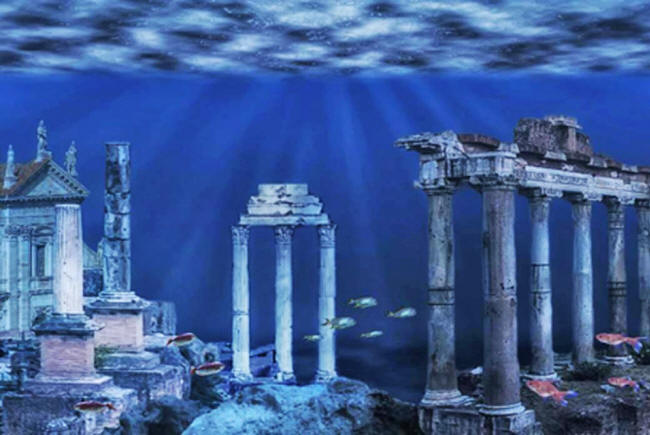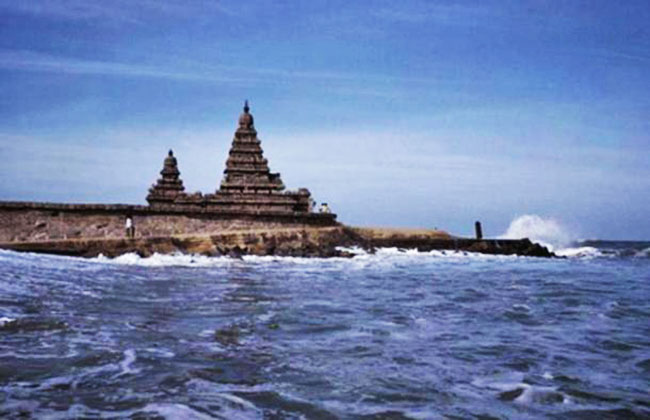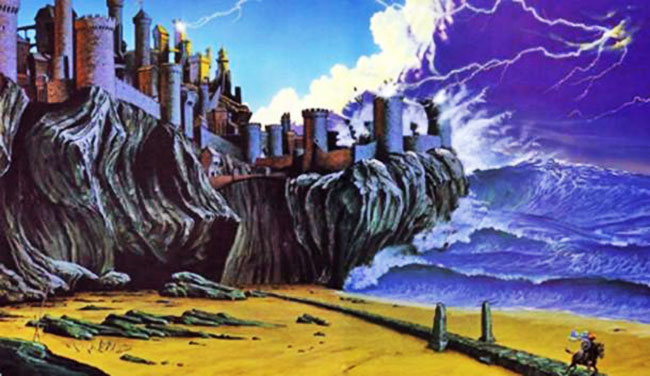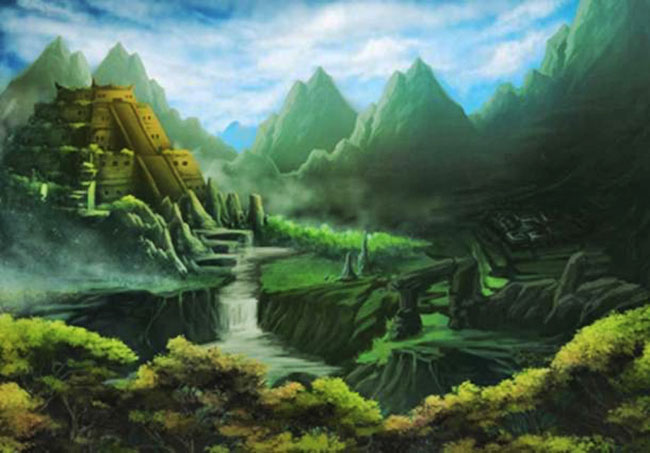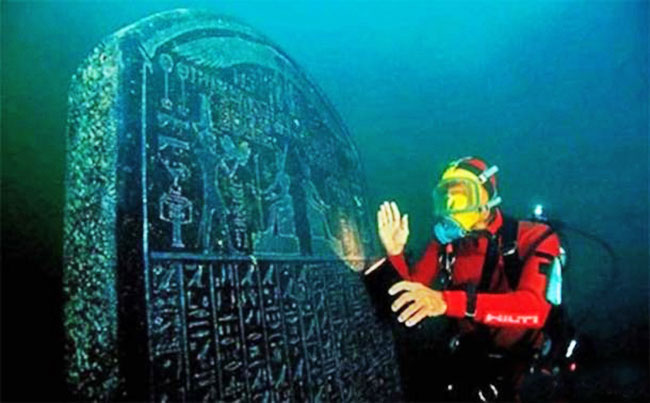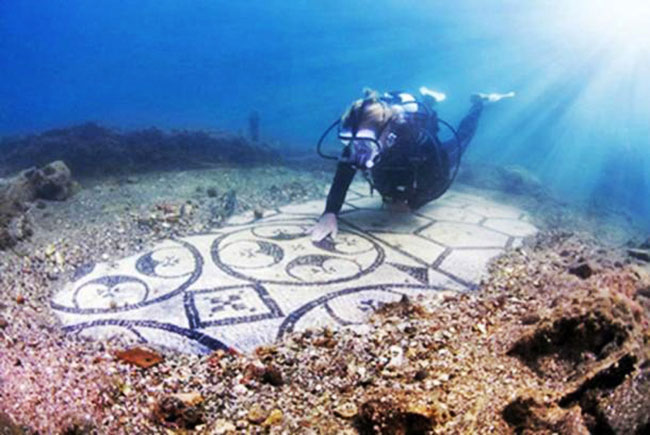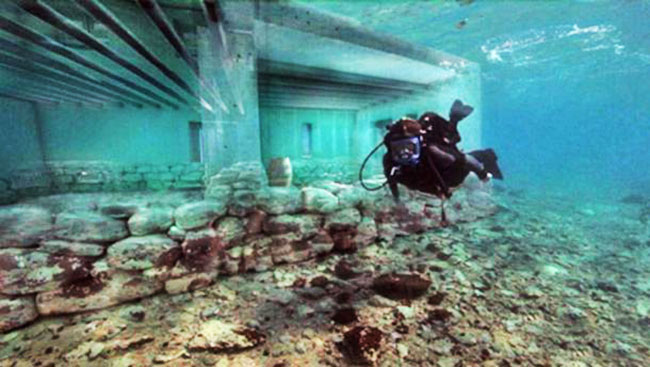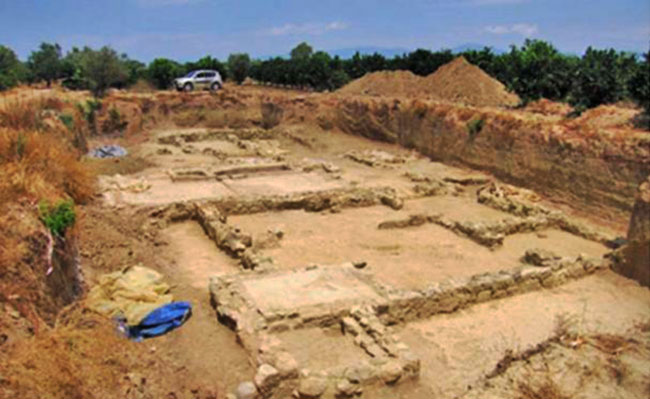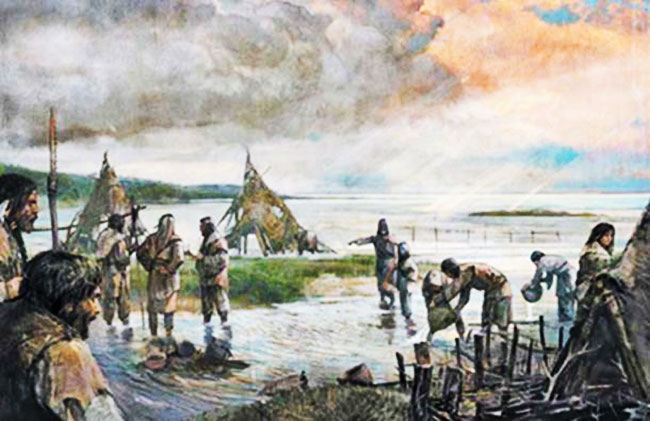|
from Ancient-Origins Website
Imaginary ruins of a sunken kingdom. Source: manjik /Adobe Stock
There is something about the underwater world that captures our imagination - perhaps it is the curiosity and intrigue about what may lie beneath the surface, or the idea that entire cities may be concealed on the ocean floor, out of sight and out of reach.
Sometimes marine archaeologists are lucky enough to make incredible discoveries, but several of the sunken kingdoms in this article remain hidden:
Shore Temple. Mahabalipuram, India.
(University of Southampton)
The 'Seven
Pagodas of Mahabalipuram' was one of the architectural
achievements of the Pallava Dynasty (3rd - 9th
century AD).
Only the Shore Temple, still visible today, was left above the water as evidence that this beautiful city had once existed. Evidence for the submerged temples emerged following the devastating tsunami that occurred December 26, 2004.
During the tsunami, it was reported that,
The force of the tsunami
managed to expose some objects that were covered by centuries of
silt.
The recent discoveries have sparked renewed interest in the Mahabalipuram legend and many say the myth of the seven submerged temples might one day be considered a true historical event.
Artist's depiction of Lyonesse being swept away.
( AnnoyzView)
It's now referred to as
the "Lost Land of Lyonesse," as it is ultimately said to have sunk
into the sea.
Very suddenly the land
was flooded by the sea, entire villages were swallowed, and the
people and animals drowned. Once it was covered in water, the land
never re-emerged.
Evidence shows that sea levels were considerably lower in the past, so it's possible that an area that once contained a human settlement above-ground is now beneath the sea.
Indeed, fisherman near the Scilly Isles tell tales of retrieving pieces of buildings and other structures from their fishing nets.
These stories have never
been substantiated, and are viewed by some as tall tales...
Cantre'r Gwaelod, or The Lowland Hundred: The stumps are the remains of an ancient submerged forest that extends along the coast. Is this a long-lost sunken kingdom?
(Richerman/ CC BY SA 3.0 )
Up to around the 17th century, Cantre'r Gwaelod was known as Maes Gwyddno (meaning 'Gwyddno's Land'), so named after this Welsh ruler.
An earlier version of the
legend associated with Maes Gwyddno asserts that the land was
submerged under water when Mererid, a priestess of a fairy well,
allowed the water to overflow, sinking the kingdom forever.
The location of the
ancient kingdom is now believed to lie between Ramsey Island and
Bardsey Island in
Cardigan Bay, and to extend about
32 km (19.88 miles) west of the current shoreline into the bay.
Artist's representation of an Aztec temple in a mystery land. Aztlan is the Aztec's legendary homeland.
( Christopher /Adobe Stock)
Some believe it is a
mythical land which will live on through legend but will never be
found in physical existence.
However, these searches
have been fruitless, as the location - and existence - of Aztlan
remains a mystery.
In some tales, Aztlan is viewed as a land of paradise, specifically an island on a lake, for all inhabitants.
However, the Aztecs fled
the island when a tyrannical elite took hold. Their migration from
Aztlan to Tenochtitlán began on May 24, 1064, which was the first
Aztec solar year.
An amazingly well-preserved 1.9-metre-tall Heracleion stele commissioned by Nectanebo I in 378 - 362 BC, complete with detailed and clearly readable inscriptions.
(Cristoph Gerigk)
It was one of the most
important trade centers in the Mediterranean before it sank more
than a millennium ago.
But in 2001 an underwater
archaeologist searching for French warships stumbled across the
sunken city.
It was one of the most
significant underwater discoveries in over a decade.
A diver explores the Baiae Underwater Archaeological Site. (Antonio Busiello)
In its heyday, Baiae was regularly visited by famous Roman Caesars including Julius Caesar, Nero, and Hadrian - who died there.
It was considered one of the most important Roman cities for centuries.
Pliny used to live here and
from here, across the gulf, he witnessed and described the 79 AD
eruption of Mount Vesuvius that destroyed Pompeii and Herculaneum.
The original foundations of the city underneath the reconstructed pillars and walls of one of the buildings.
(Discovery)
It's believed to be the
oldest known submerged city in the world.
Research in 2009 revealed
that it had been inhabited prior to 2800 BC. Scientists estimate
that the city sunk around 1000 BC due to earthquakes that shifted
the land.
The name of the city is still unknown.
Excavations at the site of Helike. In this case, a Hellenistic-era building; possibly used as a dye-works.
(Drekis/ CC BY SA 3.0 )
During its heyday, it was
the leader of the first Achaean League, a confederation that
consisted of 12 cities in the surrounding area.
Some signs of the city's
impending doom were recorded, including the appearance of 'immense
columns of flames' and the mass migration of small animals from the
coast to the mountains several days prior to the disaster.
It was not until 2001
that the ruins were finally unearthed and only in 2012, when the
destruction layer was uncovered, that the site was confirmed as
Helike.
Deriv; A drowned land.
(Flickr/ CC BY-NC 2.0 )
They claim they did not
come to North America across the Bering Strait, but north from South
America, specifically from a land called
Kásskara.
Hawaii is a remnant of
the Hopi ancestors' original motherland, and
Rapa Nui (Easter Island) is the
last remaining of several islands that helped Kásskaran refugees
cross the vast expanse of ocean to South America.
People had high morals
and lived peacefully for a time. But when men began to lose respect
for one another and fought with the Atlanteans both continents met
their demise.
(Alexander Maleev)
Located in the North Sea,
Doggerland is believed to have once measured approximately 100,000
square miles (258,998 square kilometers).
Prehistoric humans living
in the region lost their homes when catastrophic floods covered the
territory sometime between 8000 - 6000 BC.
Researchers have mapped
the seabed to track how climate change had an impact on Doggerland
and the succession of cataclysms that turned it into a sunken land.
|


